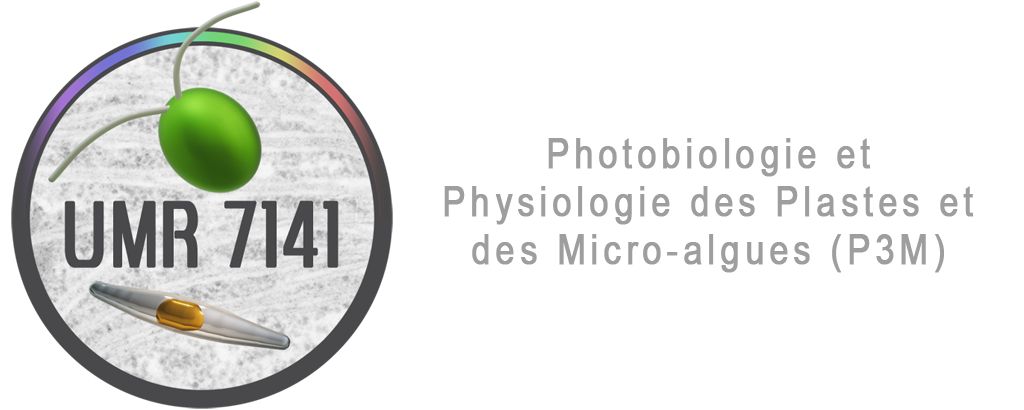Time Resolved Spectroscopy (D. Béal, F. Rappaport, P. Joliot)
We have developed three spectrophotometers based on the usage of impulse detection. With this technique, we can obtain a signal:noise ratio of close to 10-5, making it possible to detect variations in absorption in very dilute samples. Thus we can measure signals from integrated photosynthetic systems like chloroplasts, entire cells and even intact leaves. When very high resolution time kinetics are being studied we have two spectrophotometers which use a laser as the source of detection and can be adjusted to the wavelength of the actinic light flashes. The duration of the laser detection is 5ns thus we can achieve a kinetic resolution in the ns range.
We have recently created a fourth spectrophotometer (characteristics and description), based on LED technology for generating light pulses. This tool, permits the detection of absorption changes and of fluorescence in vivo and has been commercialised in 2006 by Bio-Logic.
Fluorescence (D. Béal, P. Joliot)
Fluorescence is the phenomenon of luminescence in which the molecular absorption of a photon triggers the emission of another photon with a longer wavelength. The energy difference between the absorbed and emitted photons ends up as molecular vibrations in the visible range (or heat). Fluorescnce can be used as an indicator of the redox state of the primary quinone acceptor, QA, of PSII (the redox state of QA very strongly modulates the probability of trapping excitation energy, and therefore the yield of fluorescence). It also provides an indication of the size of the light harvesting antenna associated with PSII. These characteristics, taken together with a user friendly methodology, have made it a tool of choice for the rapid characterisation of the redox state of the photosynthetic system and the degree of association of the antennae with PSII. We have developed three different fluorometers, permitting the measure of variations in fluorescence induced by an illumination on suspensions of algal cultures, on intact leaves or on unicellular algal colonies. These different techniques allow for a rapid characterisation of the photosynthetic chain; making it a powerful tool for use in the phenotyping technique of selection.
Camera
Photoacoustic spectrometry (Calorimetric analysis) (D. Béal, P. Joliot)
This technique is used for the detection (in the form of a pressure wave) of any variation in volume induced by the absorption of a photon. When photochemical activity is inhibited, exciton energy is dissipated principally in the form of heat resulting in a thermal dilation proportional to the energy absorbed. On the contrary, the photochemical reaction stocks a part of this exciton energy. Comparing pressure waves produced under the two conditions gives a linear measure of photochemical activity and allows us to establish, by observing the absorption of photons at various wavelengths, action spectrum of each photosystem. This method allows us to identify by their spectral signature the antennas associated with one or the other of the two types of photochemical centres.
Biolistic Transformation Apparatus (D. Béal d’après Zumbrunn et Rochaix U. de Genève)
To transform the chloroplast genome of C. reinhardtii we use a particle canon (biolistic transformation method) built in our laboratory and adapted from a similar machine conceived at the University of Geneva. A pressurised helium jet (7 bars for a duration of 20ms) propels tungston particles (Ø 1µm) enrobed in DNA (2 µg of supercoiled plasmid by shot) on a fine layer of cells placed in a vacuum (approximately 1-2 107 cells ; vacuum 48 mbars; distance to target 15cm). We obtain about 1000 transformed clones by shot.
